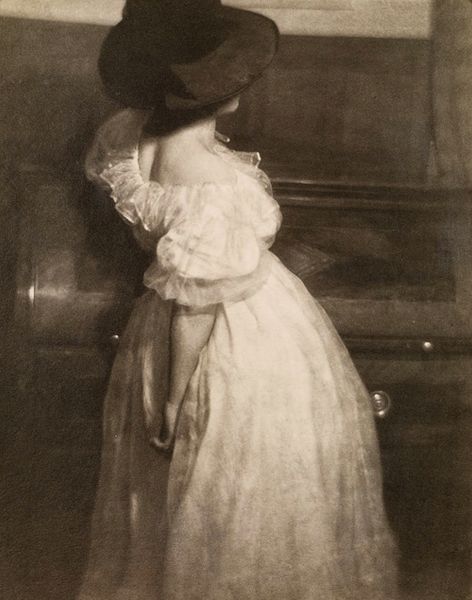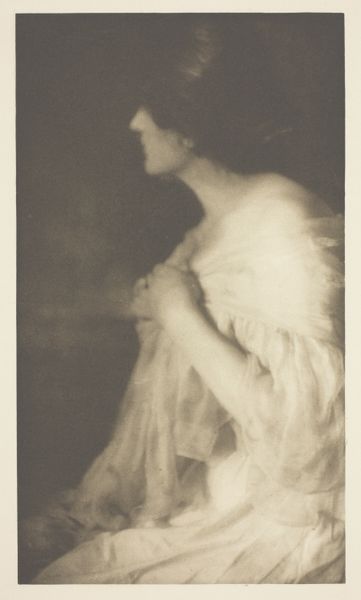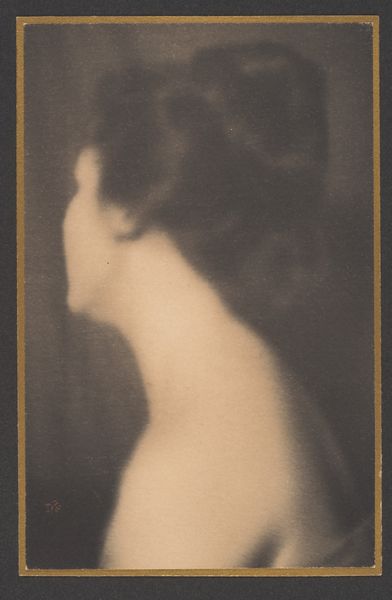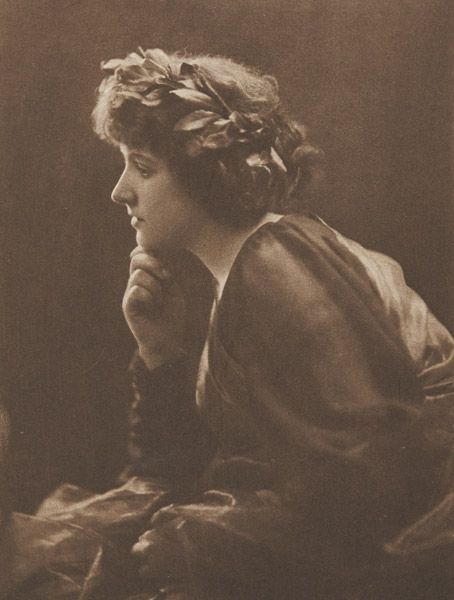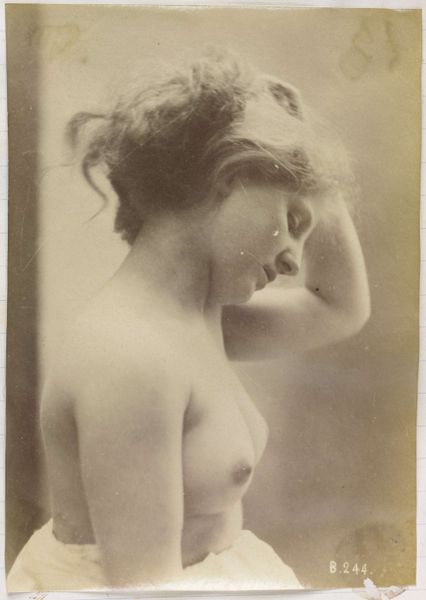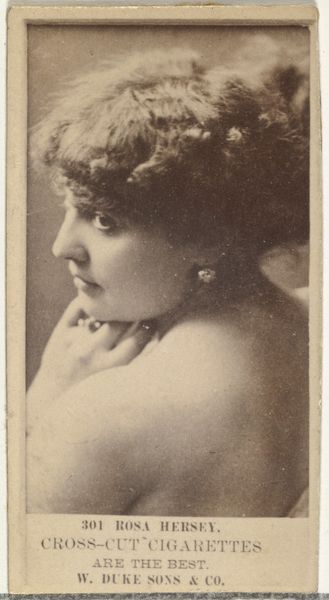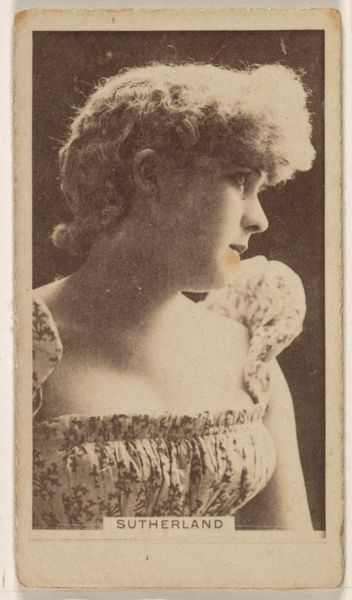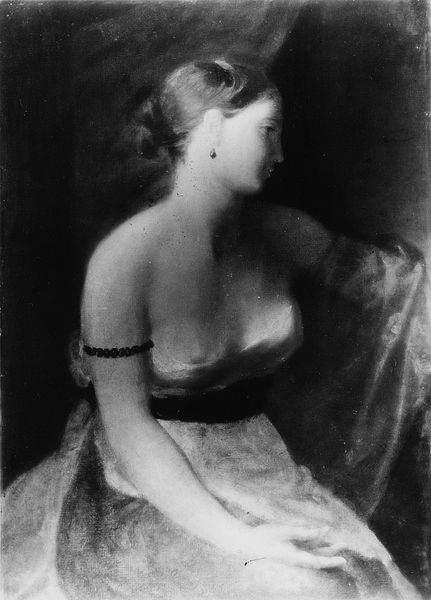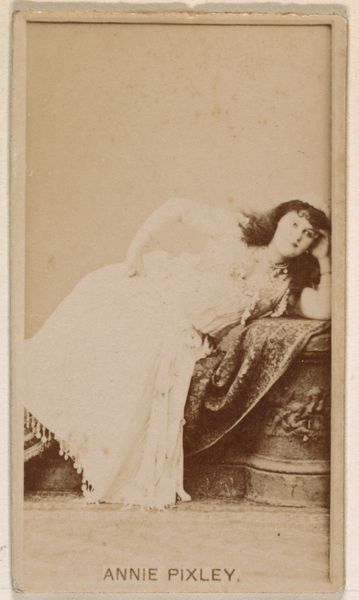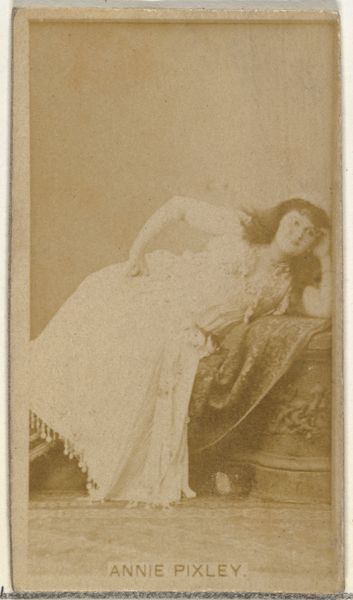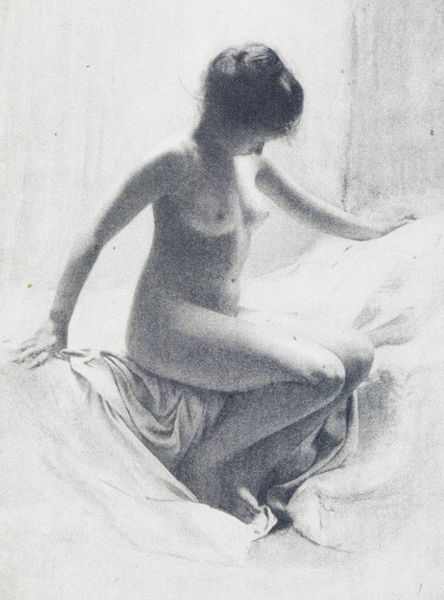
photography
#
portrait
#
photography
#
intimism
#
symbolism
Copyright: Public domain
Curator: Here we have Heinrich Kuhn's 1904 photograph, "Lady before a Mirror." What's your first reaction? Editor: I'm struck by how tangible it feels. It's a photograph, of course, but the tonal qualities give the fabric of the woman's dress and even the wall behind her a sense of weighty presence. Curator: It's a work steeped in Symbolism and Intimism, philosophies quite prevalent at the time. Consider the turn of the century – what societal constraints are placed on women? How does this image reflect or resist those expectations? Editor: The heavy dress itself becomes part of that story. The way it drapes and obscures suggests the restrictions imposed by societal norms. Also, the making of these kinds of garments—all those yards of fabric manipulated into complex forms, supported by understructures that constrain movement—the clothing itself represents labor and confinement. Curator: And then the mirror. Not just a vanity object but a symbol of introspection, of fragmented identity, of the male gaze perhaps turned inward, challenged. Kuhn here grants us access to her inner world, but in a very controlled, mediated way. She’s observing herself observing herself. Editor: Right, but consider the medium of photography. Think of the labor that goes into preparing photographic materials, coating plates, managing light, posing the subject. It’s not simply a ‘captured’ image; it's a crafted object imbued with a particular worldview through technical expertise. Curator: Absolutely. Kuhn, within the Photo-Secessionist movement, prioritized artistic expression, emphasizing tonality, composition, almost a painterly aesthetic. The use of soft focus, for example, disrupts a straightforward interpretation of femininity. Editor: Exactly! This aligns with the labor-intensive processes inherent to pictorialism; platinum or gum bichromate printing. Each print becomes a handmade object, complicating its role as pure representation. Curator: Reflecting on Kuhn’s artistic choices offers, for me, an intimate portrait. A quiet resistance is displayed on these older images and a reminder of constraints. Editor: Yes, considering both material practices and their socio-historical circumstances we come to a more nuanced appreciation of this early pictorialist photograph.
Comments
No comments
Be the first to comment and join the conversation on the ultimate creative platform.
